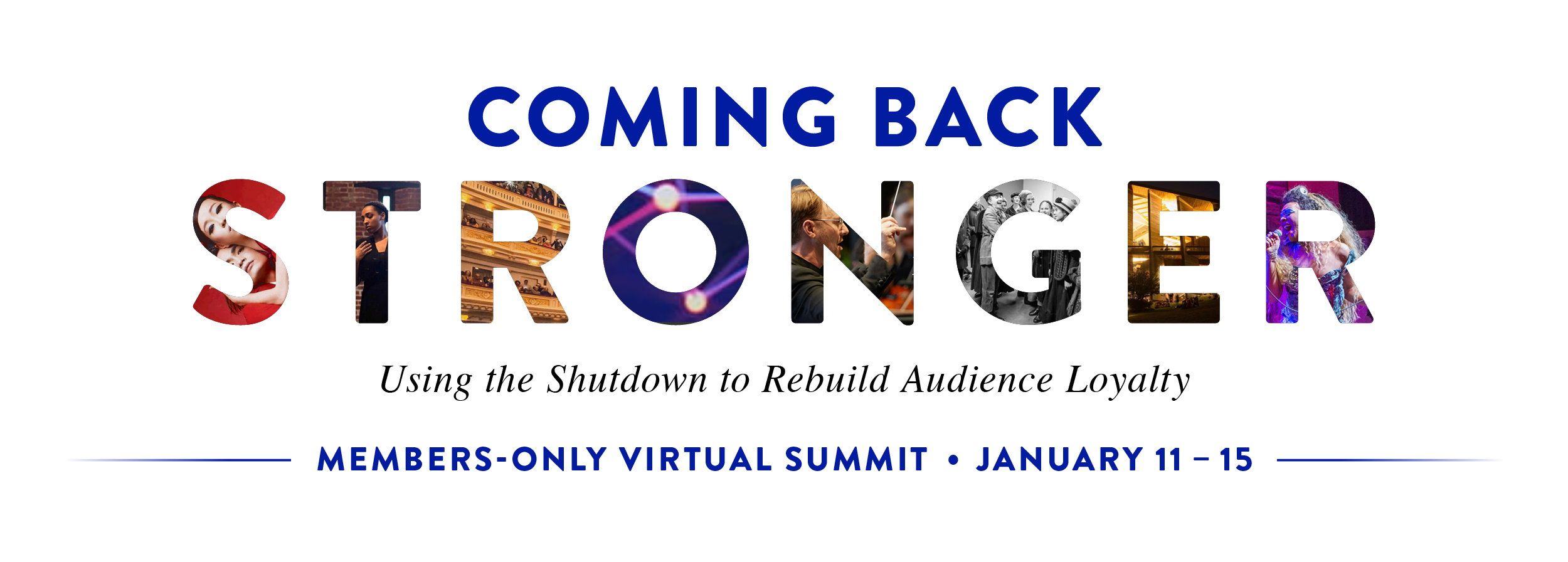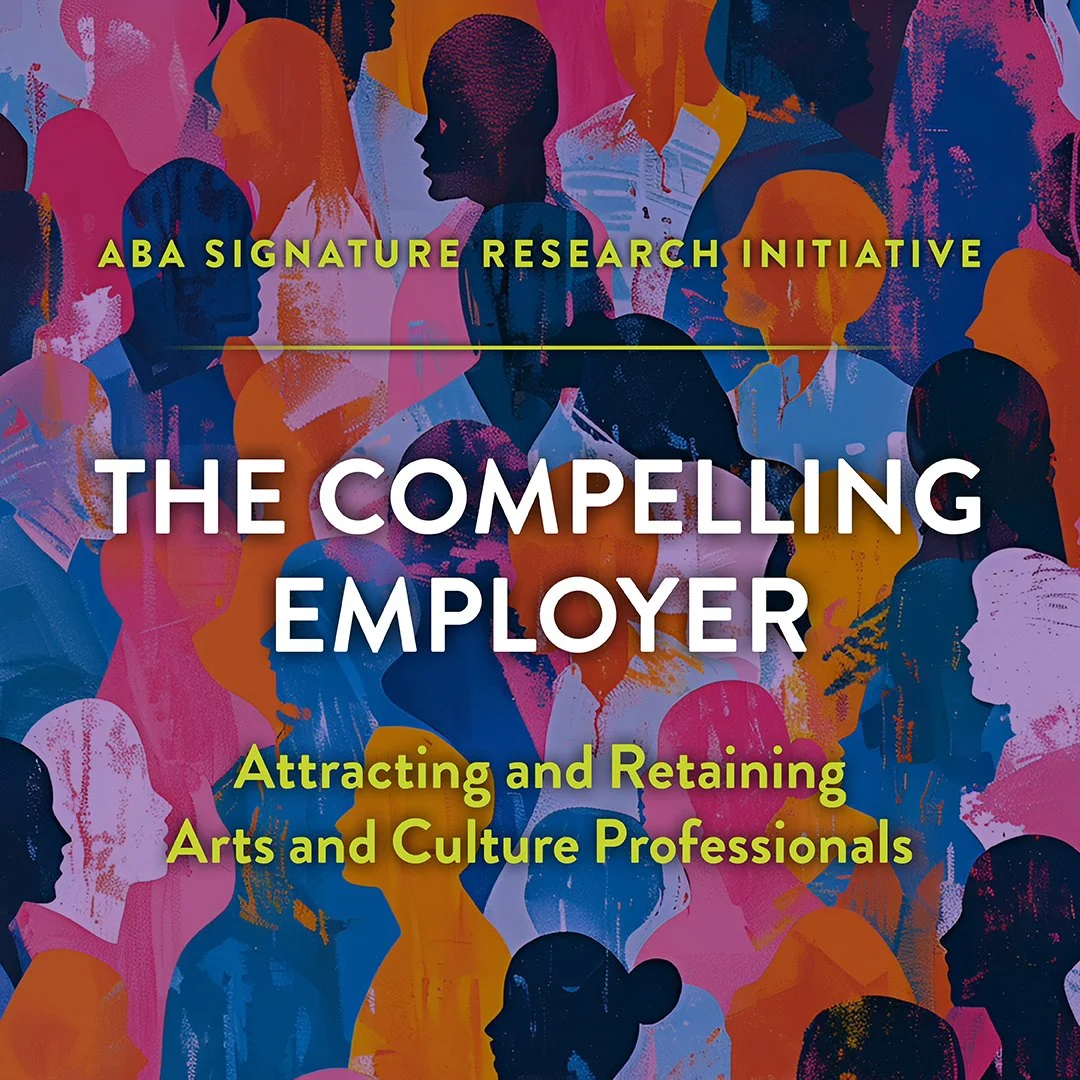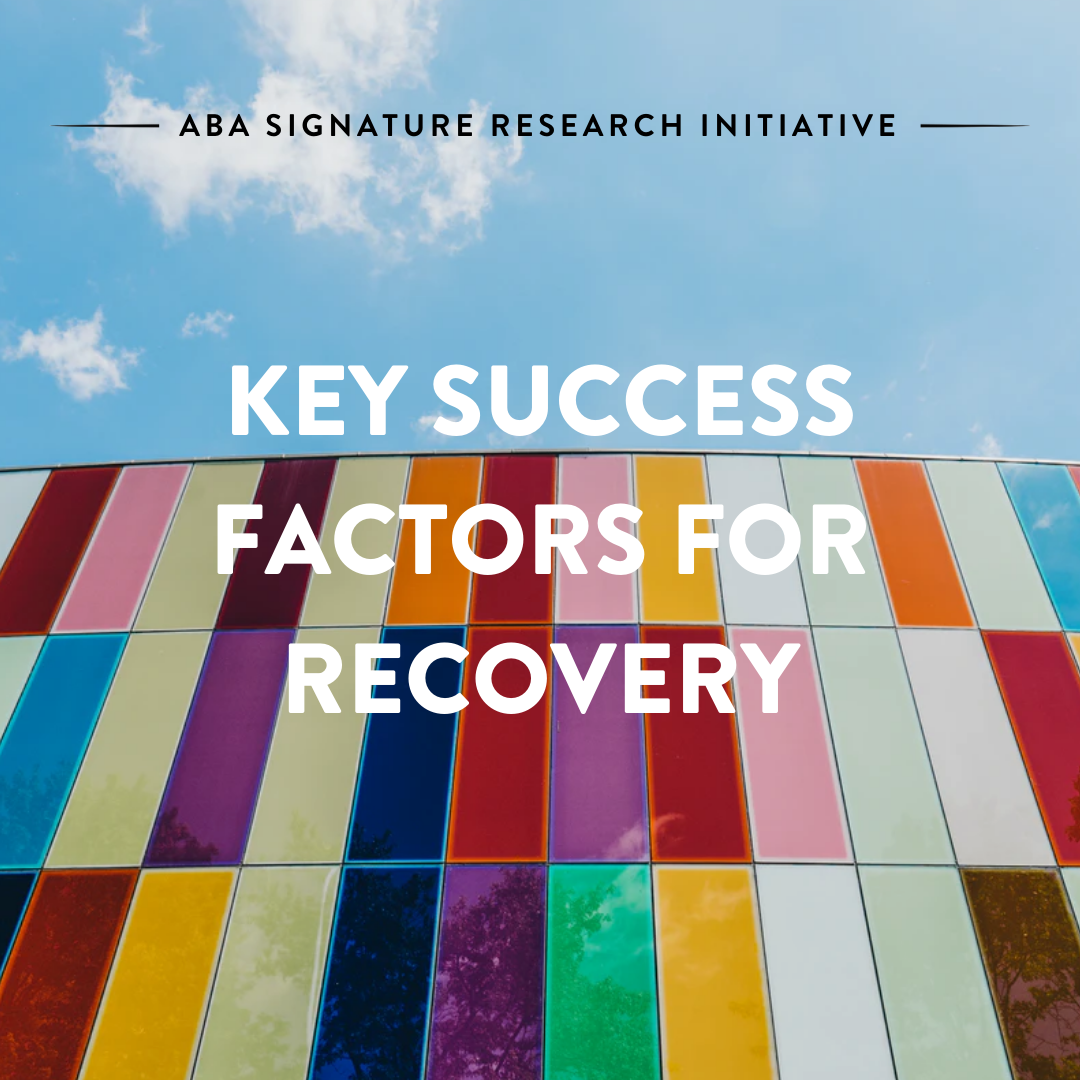The following is a collection of ABA’s Signature Research Initiatives. Each initiative presents the high-level findings of our multi-month studies devoted to a specific challenge for arts organizations, such as donor motivations and behaviors, digital monetization, COVID recovery, and more.
Our Signature Research Initiatives are reserved exclusively for ABA members.
This season ABA is launching The Compelling Employer, a groundbreaking research initiative examining the employment preferences of arts and culture employees across genres and geographies. This work will build on ABA’s 2022 work on The Compelling Offer. The pandemic may be behind us, but staff acquisition and retention remain core industry-wide concerns. ABA is revisiting this initiative to understand how staff preferences have changed and what organizations can do to attract and retain high performers.
Our Compelling Employer survey uses conjoint analysis (also known as trade-off analysis) to give arts and culture leaders a much clearer picture of what employees want in a job, and what they are willing to trade off to get it. This newly updated survey will seek to understand what staff value in their managers, pay structures, culture and office environments. In addition, we will profile best practices in improving manager quality, shifting to pay for performance, and cultivating culture change from both inside and outside the arts and culture industry.
In our post-pandemic arts world, many arts organizations are discovering that most of the patrons that are going to come back have come back already. Even organizations with healthy audiences right now are facing challenging budgeting environments, so the need to build a new base of customers and to increase attendance by casual audiences and visitors is acute.
ABA is deploying a survey of marketing resource deployment, activities and other behaviors in order to assess quantitatively the marketing drivers behind healthy attendance.
At a time when the labor market is heating up, arts organizations must find ways to resonate better with the needs and expectations of employees in order to build employment offers capable of competing in a tight labor market.
The Advisory Board for the Arts used conjoint analysis (also known as trade-off analysis) in order to give arts leaders a much clearer picture of what employees want, and what they are willing to trade off in order to get it.
We surveyed more than 5,000 donors to arts organizations and interviewed over fifty development leaders from arts organizations around the world.
In our analysis, we found that donors clustered into three segments: Benefits Donors, Arts Lovers, and Community Donors.
We learned how organizations can engage the different categories of donors most effectively while contributing to community engagement.
Learning from the accelerated digital shift of the COVID-19 closures, our initiative examined how arts organizations can use digital content not only to build audiences and keep patrons loyal, but also to generate necessary funding for future activities.
While direct revenue may be less likely for new digital offerings, there are important benefits beyond earned income such as donation success, audience learning, and future value.
As we emerge from the pandemic, a primary concern for arts organizations of all genres is how to bring audiences back in a robust way - as soon and as safely as possible.
ABA’s Coming Back Stronger signature research initiative looked at audience motivations to attend arts performances and what we can do to secure their loyalty during the shutdown.
The Key Success Factors for Recovery initiative focused on how arts organizations can overcome challenges of the COVID-19 crisis and shutdown. To present the findings, ABA held a series of virtual meetings with member organizations.
Content addressed how to improve the resilience of recovery plans, assessing audience preferences for digital experiences, building digital strategies with enduring value, and creating meaningful experiences in digital.









